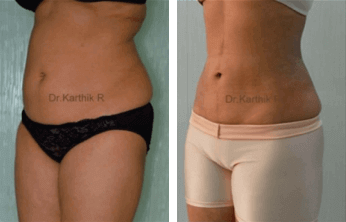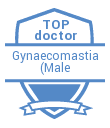OVER VIEW ON DEVIATED NASAL SEPTUM

Deviated nasal septum, often called DNS – what is it ? There is a saying that goes, “As goes the septum the nose goes its way”. A septum is a midline structure made up of cartilage and bone that separates the nasal cavity into two halves. It is genetically present since birth. It can be ‘s’ or ‘c’ shaped. In 80% of the human population, it is off the centre. According to the birth moulding theory when the baby is in the mother’s womb, the septum undergoes compression forces which acts on the septum due to abnormal intra-uterine posture, and retains a position of either deviated to the left or to the right side which is very unique in every Individual. Another interesting factor is that when the second stage of labour lasts more than 15 minutes in a primia, dislocation of the septum can occur.
What are the effects it can cause?
- It causes nasal obstruction by restricting air entry through the nasal passage.
- It can cause pressure on the nerves present in the nasal cavity to produce pressure symptom of headache.
- It can cause sinus outflow obstruction.
- Most importantly, a septal spur when present, can traumatise a blood vessel and produce nasal bleeding called epistaxis.
Rich vascular plexus of veins are present in the lower end of the septum. Hence when it is exposed to temperature variation or an injury it causes nasal bleeding. It is one of the most common cause of epistaxis in children, contributing to sleep apnoea and noisy breathing.
How is it diagnosed ?
When you walk in for your consultation, as some deviation are deep in the nose a Nasal endoscopic evaluation in the office will be carried out by the surgeon for correct diagnosis and for documentation. If any sinus out let obstruction is seen in CT imaging of the paranasal sinus, it is mandatory to get it treated.
Treatment
If symptomatic you will require surgical correction called septoplasty. It can be combined with rhinoplasty and functional endoscopic sinus surgery to get optimal results if needed. Done under local or general anaesthesia, a tiny incision is made inside your nose. Then the deviated part of the nasal septum is removed, repositioned and reinserted after proper scoring and assessment. After the surgery, to prevent nasal bleed, a nasal pack will be inserted according to the surgeons preference. If needed there will be no external visible scar seen. The recovery will be quick. Definitely there will be a good improvement in nasal airway patency if it is performed well. Also there is no risk or fear of complication once you follow your surgeons advice. To add on, the most important factor is that the septal deviation plays an important crucial role in the functional nasal airway patency. Hence any unrecognised internal nasal septal deviation is stated as one of the primary reason for failure of rhinoplasty surgical outcome. And another factor to consider is as the septum which is corrected is prone to migration and is very important to consider the anatomy behind the deviation for a great success in surgical treatment.
Here at Chennai Plastic Surgery our surgeons are highly skilled and expertise in their field. For further queries please email us and our team will be more than happy to answer and be at your service anytime.












